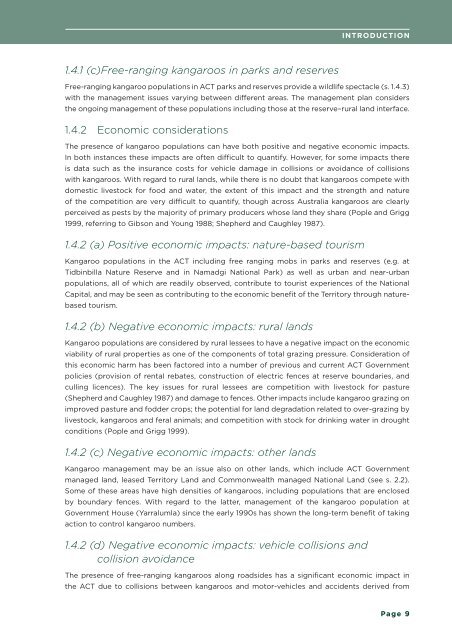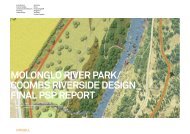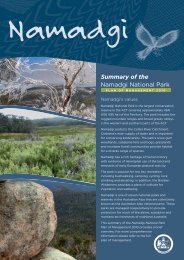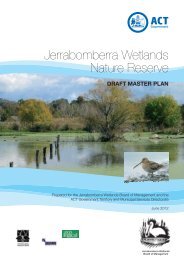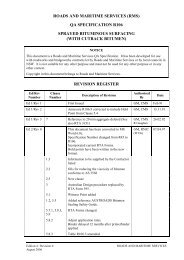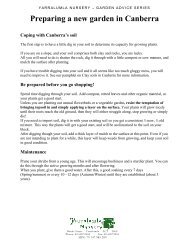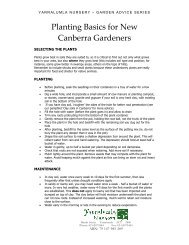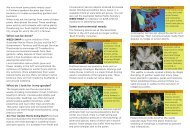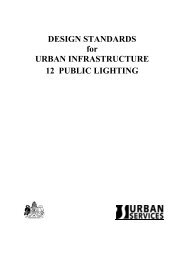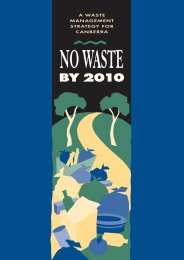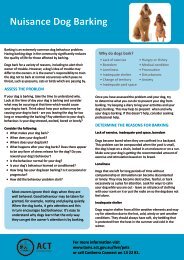Kangaroo Managment Plan - Territory and Municipal Services - ACT ...
Kangaroo Managment Plan - Territory and Municipal Services - ACT ...
Kangaroo Managment Plan - Territory and Municipal Services - ACT ...
You also want an ePaper? Increase the reach of your titles
YUMPU automatically turns print PDFs into web optimized ePapers that Google loves.
INTRODUCTION<br />
1.4.1 (c)Free-ranging kangaroos in parks <strong>and</strong> reserves<br />
Free-ranging kangaroo populations in <strong>ACT</strong> parks <strong>and</strong> reserves provide a wildlife spectacle (s. 1.4.3)<br />
with the management issues varying between different areas. The management plan considers<br />
the ongoing management of these populations including those at the reserve–rural l<strong>and</strong> interface.<br />
1.4.2 Economic considerations<br />
The presence of kangaroo populations can have both positive <strong>and</strong> negative economic impacts.<br />
In both instances these impacts are often difficult to quantify. However, for some impacts there<br />
is data such as the insurance costs for vehicle damage in collisions or avoidance of collisions<br />
with kangaroos. With regard to rural l<strong>and</strong>s, while there is no doubt that kangaroos compete with<br />
domestic livestock for food <strong>and</strong> water, the extent of this impact <strong>and</strong> the strength <strong>and</strong> nature<br />
of the competition are very difficult to quantify, though across Australia kangaroos are clearly<br />
perceived as pests by the majority of primary producers whose l<strong>and</strong> they share (Pople <strong>and</strong> Grigg<br />
1999, referring to Gibson <strong>and</strong> Young 1988; Shepherd <strong>and</strong> Caughley 1987).<br />
1.4.2 (a) Positive economic impacts: nature-based tourism<br />
<strong>Kangaroo</strong> populations in the <strong>ACT</strong> including free ranging mobs in parks <strong>and</strong> reserves (e.g. at<br />
Tidbinbilla Nature Reserve <strong>and</strong> in Namadgi National Park) as well as urban <strong>and</strong> near-urban<br />
populations, all of which are readily observed, contribute to tourist experiences of the National<br />
Capital, <strong>and</strong> may be seen as contributing to the economic benefit of the <strong>Territory</strong> through naturebased<br />
tourism.<br />
1.4.2 (b) Negative economic impacts: rural l<strong>and</strong>s<br />
<strong>Kangaroo</strong> populations are considered by rural lessees to have a negative impact on the economic<br />
viability of rural properties as one of the components of total grazing pressure. Consideration of<br />
this economic harm has been factored into a number of previous <strong>and</strong> current <strong>ACT</strong> Government<br />
policies (provision of rental rebates, construction of electric fences at reserve boundaries, <strong>and</strong><br />
culling licences). The key issues for rural lessees are competition with livestock for pasture<br />
(Shepherd <strong>and</strong> Caughley 1987) <strong>and</strong> damage to fences. Other impacts include kangaroo grazing on<br />
improved pasture <strong>and</strong> fodder crops; the potential for l<strong>and</strong> degradation related to over-grazing by<br />
livestock, kangaroos <strong>and</strong> feral animals; <strong>and</strong> competition with stock for drinking water in drought<br />
conditions (Pople <strong>and</strong> Grigg 1999).<br />
1.4.2 (c) Negative economic impacts: other l<strong>and</strong>s<br />
<strong>Kangaroo</strong> management may be an issue also on other l<strong>and</strong>s, which include <strong>ACT</strong> Government<br />
managed l<strong>and</strong>, leased <strong>Territory</strong> L<strong>and</strong> <strong>and</strong> Commonwealth managed National L<strong>and</strong> (see s. 2.2).<br />
Some of these areas have high densities of kangaroos, including populations that are enclosed<br />
by boundary fences. With regard to the latter, management of the kangaroo population at<br />
Government House (Yarralumla) since the early 1990s has shown the long-term benefit of taking<br />
action to control kangaroo numbers.<br />
1.4.2 (d) Negative economic impacts: vehicle collisions <strong>and</strong><br />
collision avoidance<br />
The presence of free-ranging kangaroos along roadsides has a significant economic impact in<br />
the <strong>ACT</strong> due to collisions between kangaroos <strong>and</strong> motor-vehicles <strong>and</strong> accidents derived from<br />
Page 9


